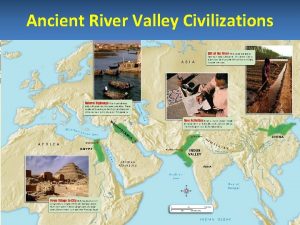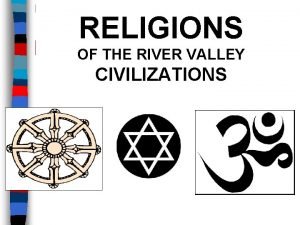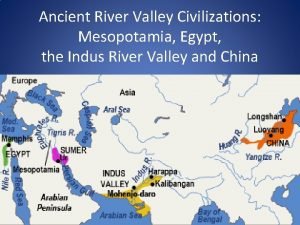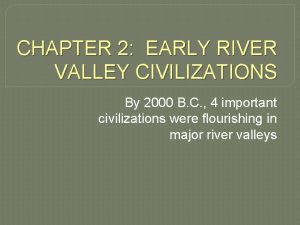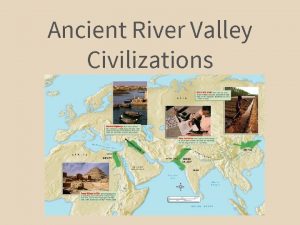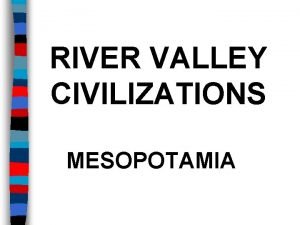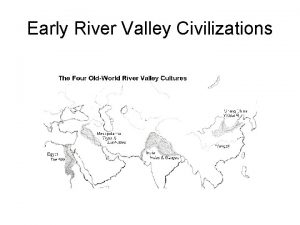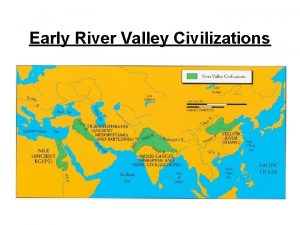Civilizations Achievements Ancient River Valley Civilizations Civilization LocationRiver





- Slides: 5

Civilizations & Achievements

Ancient River Valley Civilizations Civilization Location/River Achievements Egypt Nile/ Northern Africa Hieroglyphics Pyramids Mesopotamia Tigris/Euphrates River Middle East Cuneiform Code of Hammurabi Harappa Indus River India Cities (Harappa) – laid out in a grid Monsoons (winds) China Yellow River Asia Isolated from other civilizations – natural boundaries

Classical Civilizations Civilization Greece Rome Location / Geography Achievements / Figures/ Characteristics Peninsula in southeastern Europe Very mountainous topography, it was not one united civilization. Divided into city-states (polis) – each had its own government Sparta – military state Athens- direct democracy, emphasis on culture (Socrates, Plato and Aristotle) Polytheistic – many gods Alexander the Great – Hellenistic culture, conquered Greece, Egypt, Persia and India Located on the peninsula of Italy on the Mediterranean Sea Roads – united empire Twelve Tables – Roman set of laws Pax Romana – Roman Peace, 200 year Golden Age of Rome

Classical India Dynasty Achievements Caste System Maurya Dynasty Asoka wrote laws on tall rock pillars for people to read Converted to Buddhism during his reign and is known for his kind treatment of people and animals Social hierarchy system Ruler: Asoka Gupta Dynasty Considered the Golden Age of India Many achievements in art, literature, math and science Invention of “ 0” in math Development of Sanskrit (writing) Beautiful Buddhist paintings People were born into their caste (social class) Four main castes: Brahmins (priests), Kshatriyas (warriors), Vaisyas (merchants and artisans) and Sudras ( laborers) Untouchables – lowest groups and had the worst jobs Caste system – closely associated with Hinduism

Classical China Dynasty Achievements Silk Road Qin Dynasty Based government on Legalism – belief that humans are evil and harsh punishments are needed to keep order in society Silk Road was a long trade route that extended about 4, 000 miles from China (East) to the Mediterranean Sea in the West. Like the Roman Empire, the Han grew wealthy through trade due to the system of roads they developed Connected the different classical civilizations and later ones as well Lasted only 15 years Han Dynasty Lasted 400 years Civil Service Exam – system in which government positions were given only to skilled people who passed difficult exams Cultural Diffusion – exchange of goods and ideas between societies. Silk Road let to the exchange of Silk (products) and religious ideas (Buddhism) between places

